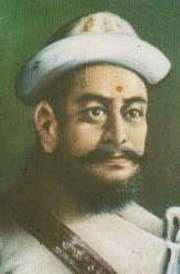Nepal 26,494,504 United States 59,490 Canada 9,780 | Bhutan 265,000 Hong Kong, China 15,950 | |
 | ||
India 2,871,749Nepalese migrant workers | ||
Nepalis, also referred to as Nepalese (Nepali: नेपाली गण), are the Indo-Aryan and Sino-Tibetan citizens of Nepal under the provisions of Nepali nationality law. The country is home to people of many different national origins. As a result, people of Nepal do not equate their nationality with ethnicity, but with citizenship and allegiance. Although citizens make up the majority of Nepalese, non-citizen residents, dual citizen, and expatriates may also claim a Nepalese identity. Nepalese are descendants of migrants from parts of India, Tibet, and parts of Burma and Yunnan, and much further traces origin to Central Asia, along with indigenous peoples.
Contents
Map of Nepal
Nepal is a multicultural and multiethnic country. Kathmandu Valley, in the middle hill region, constitutes a small fraction of the nation's area but is the most densely populated, with almost 5 percent of the nation's population.
Name
Local legends say that a Hindu sage named "Ne" established himself in the valley of Kathmandu in prehistoric times and that the word "Nepal" came into existence as the place was protected ("pala" in Pali) by the sage "Ne". It is mentioned in Vedic texts that this region was called Nepal centuries ago. According to the Skanda Purana, a rishi called "Ne" or "Nemuni" used to live in the Himalayas. In the Pashupati Purana, he is mentioned as a saint and a protector. He is said to have practised meditation at the Bagmati and Kesavati rivers and to have taught there.
The name of the country is also identical in origin to the name of the Newar people. The terms "Nepāl", "Newār", "Newāl" and "Nepār" are phonetically different forms of the same word, and instances of the various forms appear in texts in different times in history. Nepal is the learned Sanskrit form and Newar is the colloquial Prakrit form. A Sanskrit inscription dated 512 CE found in Tistung, a valley to the west of Kathmandu, contains the phrase "greetings to the Nepals" indicating that the term "Nepal" was used to refer to both the country and the people.
It has been suggested that "Nepal" may be a Sanskritization of "Newar", or "Newar" may be a later form of "Nepal". According to another explanation, the words "Newar" and "Newari" are vulgarisms arising from the mutation of P to V, and L to R.
